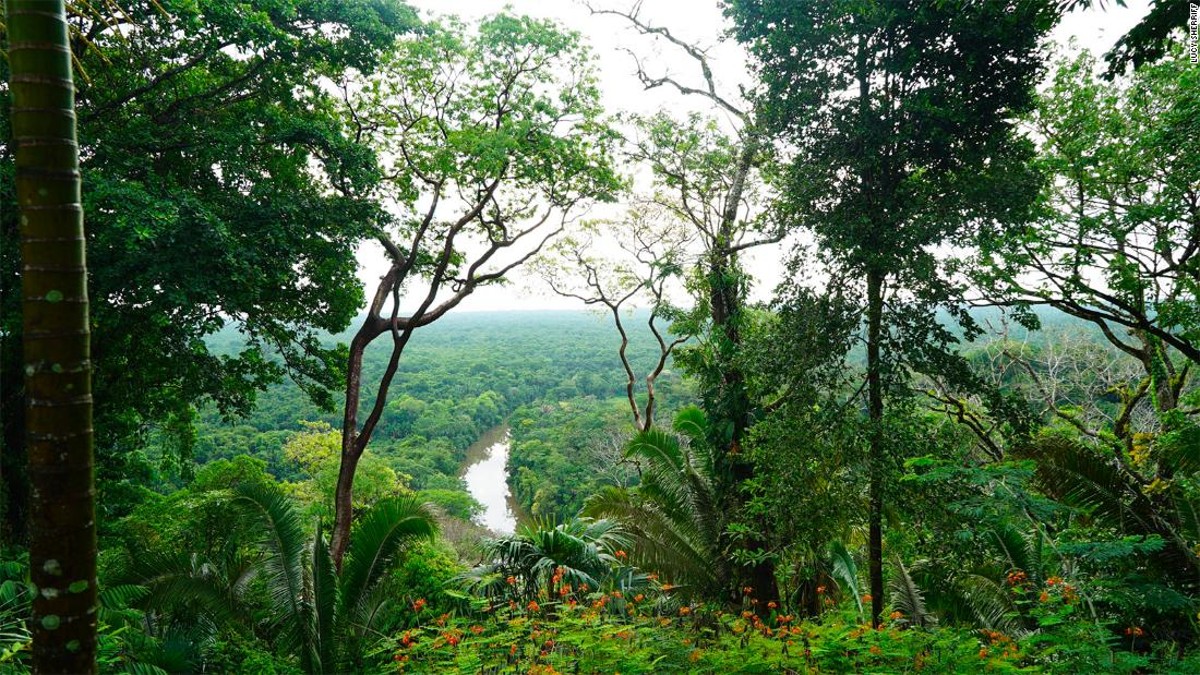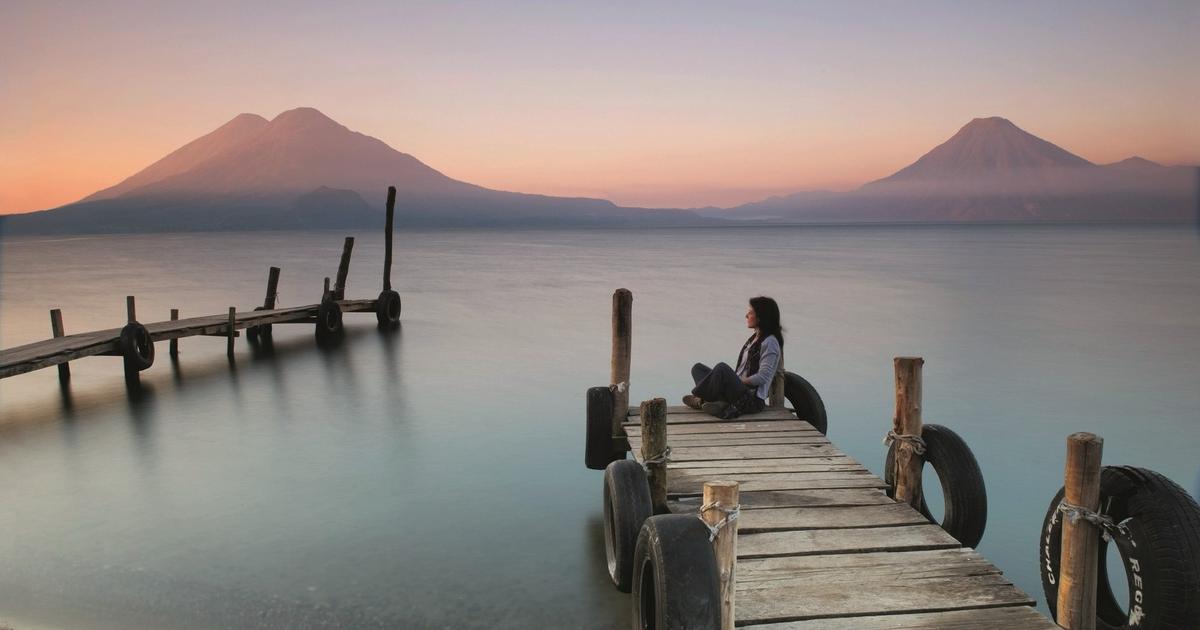What do the Mayan ancestors taste on the Day of the Dead?
1:56
(CNN) -
A turbulent journey on a 10-passenger plane from Belize City takes you through lush green jungles, rugged mountain tops and glides along the vibrant Caribbean Sea, dotted with paradise atolls, before arriving landing at a single-runway airport, a diagonal of dusty red amid the thick canopy of trees.
This is the airport of Punta Gorda, the southernmost city in Belize, with a population of 5,000.
It's remote, but it's a bustling metropolis compared to Santa Cruz, a Mayan settlement a 50-minute walk inland.
The humidity welcomes you like a warm embrace, and the bustling jungle wildlife provides a continuous soundtrack of birdsong, monkey howls and occasional roars.
This secret tunnel could be the entrance to the "underworld" of the Mayans
It is here, in this place hidden in the safety of the jungle, that the Mopan Mayan people live.
Native to Belize and Guatemala, the Mopan are one of 28 sub-ethnic groups of the Mayan people.
Approximately 10,000 people in Belize identify as Mopan, which represents less than 3% of the country's population.
So the culture is very protected by its people.
Belize was home to some of the earliest Mayan settlements, and the Mayans today make up about 11% of the country's population.
advertising
Santa Cruz is accessed via a rugged, unpaved road that winds through the mountains to open up into a small valley.
Here, tight-knit communities living in thatched-roof dwellings grow corn, potatoes, and cocoa.
It is a lifestyle that has remained almost unchanged for centuries, partly by choice and partly by circumstance.
Their very existence revolves around a daily communion with nature, their routines dictated by the seasons.
Santa Cruz is a Mopan Mayan community in southern Belize.
(Courtesy of Lucy Sheriff)
Balancing change with tradition
“We live in harmony with the land, the sun, the rain,” explains José Mes, one of the community leaders in Santa Cruz.
He wakes up to the crowing of the family rooster, and his days depend on what needs to be done at that time of year.
Maybe you're helping a neighbor fix their roof, harvesting corn, or planting seeds for fall.
Their way of life is determined by earth and sky, which can be a blessing or a curse, particularly now that they survive in a world ruled by technology.
Despite this, bringing electricity to the remote area has been a slow process.
The town, like several others nearby, is far from the national power grid, making it logistically difficult and expensive to electrify its communities.
"We have solar panels on some of the houses," says Mes, "but that's rare."
Electricity comes with its own set of challenges.
Jose Mes explains how plants are used for their medicinal properties.
(Courtesy of Lucy Sheriff)
"Our way of life here is very sheltered from the rest of the world," says Mes.
"We have had to fight hard to protect our land and our homes here, and as the world is changing rapidly, it is becoming even more difficult to do so."
Bringing electricity to the village will certainly make their lives easier, but it could also threaten their traditions.
In Mes's home, a large circular structure covered with a woven reed roof, his wife tends a small fire as she tears palm-sized chunks out of a large ball of white corn dough.
She deftly uses the palm of her hand to shape the dough into a tortilla, alternating with her fingertips to perfect it.
Mexico City, Buenos Aires and 10 other destinations to visit this autumn
When Mes opens her home to tourists, which she does with careful planning and the help of Bruno Kuppinger, a German tour guide who has been working in Belize for 25 years, she wants to give them an immersion in the daily life of her community.
Visitors are invited to lift the impossibly heavy mallet to grind the corn, mold it into dough, and try to shape the tortillas, a surprisingly complex task for untrained hands.
Mes takes his guests on a culinary exploration of everything he grows: cacao, beans, chiles, to name a few, all pure, unrefined, and straight from the ground.
The women of the community make food from what is grown on the land, including corn tortillas, which are eaten with almost every meal.
(Courtesy of Lucy Sheriff)
Fears over unbridled tourism
Mes and her family benefit from bringing tourists into their homes, but they are also aware of the pitfalls.
Tourism accounts for around 41% of Belize's GDP, so it is vital that it is developed consciously and in collaboration with local communities.
“We are not sure that the government will protect us if this suddenly becomes a big tourist destination, as it has in other areas of Belize,” adds Mes.
Belize's Ministry of Tourism is planning a large-scale expansion of transportation infrastructure in the region, hoping to attract more tourists to Toledo, the southern district that borders Guatemala.
Currently, many of the major cities in the United States are connected to the country, but there are no European flights.
"We think we can continue to build the tourism industry [in Toledo] if we build airports and air links in the country," says Anthony Mahler, Belize's Minister of Tourism.
"[We also need] to invest in the infrastructure that supports tourism, such as hotel rooms, roads leading to archeological sites and national parks."
The story of the amazing viral tourism spot in Jujuy
There are numerous archaeological sites throughout the country, including in the Toledo region and around Santa Cruz, which are a key attraction for foreign visitors.
"Obviously it needs to focus on the sustainability of our cultures, natural resources and training our people to ensure they are prepared to work in the tourism industry at a high level," adds Mahler.
"We are updating our sustainable tourism master plan, which guides what we do to address today's issues."
The corn dough is wrapped in a large sheet to keep it fresh.
(Courtesy of Lucy Sheriff)
"I'm a little bit worried"
Bruno Kuppinger, who works with Mes, has carefully developed relationships with Mayan communities.
"I think realistically nothing is going to happen for the next five to 10 years," says Kuppinger.
"But the Mayan people definitely need some kind of protection.
"I'm a little worried that Toledo could be the next emerging destination, and there will be no safeguards to prevent anyone from visiting the towns."
Mahler insists that the government will work closely with communities to consult on any expansion and that the country's comprehensive tour guide training program will ensure mass tourism to Mayan villages remains contained.
Explore the world's largest sinkhole 1:18
"We think we have enough quality guides to lead tours in these [Mayan] communities," adds Mahler.
"And the infrastructure that would be needed to get hundreds or thousands of people into that area just doesn't exist. So by the nature of the lack of infrastructure, you're not going to see that level of tourist activity in those communities like Santa Cruz."
Engaging visitors with the Mayan way of life helps preserve their own traditions, but is a delicate balance against the threat of overtourism.
It is a story that is happening all over the world.
"We are moving more into the modern world because our way of life is very difficult to maintain in the times we live in," says Mes.
"But we would like to be able to manage our involvement with the outside world and not have strangers come to us without our permission."
However, if handled delicately and sensitively, the tourism business could provide a sustainable future for Santa Cruz.
Mes enjoys the opportunity to share her indigenous traditions and knowledge with outsiders, and also learns from tourists.
"I am not against people visiting our town, I enjoy the conversations and the connections.
"It's a good opportunity to learn about our way of life, and maybe they can take something home with them. And of course we also learn from tourists."
BelizeMayans


/cloudfront-eu-central-1.images.arcpublishing.com/prisa/VJEQPDZR7VGOFMRM3OPJZFFZJQ.jpg)
/cloudfront-eu-central-1.images.arcpublishing.com/prisa/5UPDG5IW2NDDFFUK3WJTFKMSPE.jpg)



/cloudfront-eu-central-1.images.arcpublishing.com/prisa/XWDEWCZPBVCCDFB3VJU2TWK5PY.jpg)
/cloudfront-eu-central-1.images.arcpublishing.com/prisa/3TOQKX7CUJEMHBMHIA7GJRIXC4.jpg)






